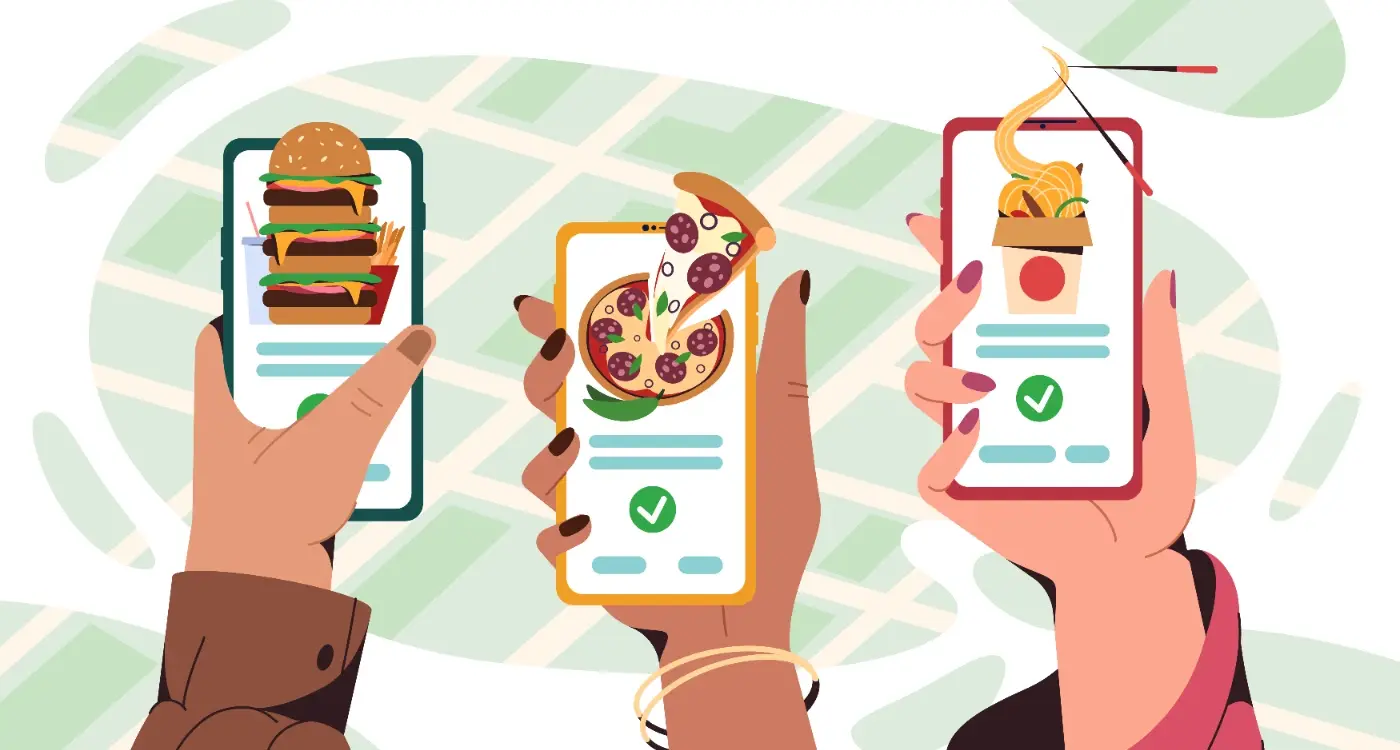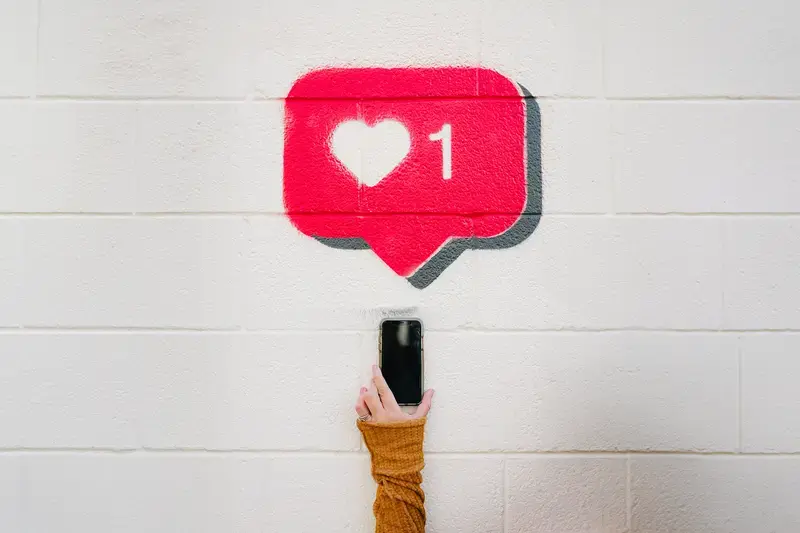Should I Focus on Getting New Users or Keeping Existing Ones Happy?
Apps that focus heavily on keeping existing users engaged see retention rates that are three times higher than those prioritising new user acquisition alone. It's a bit mad really—most app owners spend their entire budget trying to get new downloads while completely ignoring the people who've already shown interest in what they're building.
I've been working with mobile apps for years now, and this question comes up in practically every strategy meeting I have with clients. Should we put our money into Facebook ads and App Store optimisation to get more downloads? Or should we focus on push notifications, in-app messaging, and feature updates to keep our current users happy? The honest answer? It's not really an either-or situation, but most businesses get the balance completely wrong.
The most successful apps I've worked on treat user acquisition and customer retention as two parts of the same growth strategy, not competing priorities
Here's what I've learned from building apps for everyone from bootstrapped startups to major brands: your growth strategy needs both new users and happy existing ones, but the timing and balance between them can make or break your app's success. Get it right, and you'll see sustainable growth that compounds over time. Get it wrong, and you'll either burn through your marketing budget with nothing to show for it, or you'll plateau with a small but loyal user base that never grows.
In this guide, we'll break down when to focus on what, how to measure success properly, and most importantly—how to avoid the common mistakes that kill both your acquisition efforts and your retention rates.
The Real Cost of Getting New Users
Right, let's talk numbers—because this is where most app owners get a proper shock. When I started building apps years ago, you could get new users for pence. These days? We're looking at costs that would make your eyes water. The average cost to acquire a new user ranges from £2 to £10, and that's just to get them to download your app. Not to actually use it properly.
But here's the thing that really gets me—most people think that £5 per download sounds reasonable. "Only a fiver to get someone using my app? Brilliant!" Except it's not just £5, is it? Because out of every 100 people who download your app, about 80 will never open it again after the first day. Bloody hell, that means you're actually paying closer to £25 for each person who sticks around for more than 24 hours.
The Hidden Costs Nobody Talks About
And we haven't even started talking about the hidden costs yet. There's the money you spend on app store optimisation, the countless hours tweaking your marketing campaigns, the designer you hired to make those Facebook ads look decent, the developer time spent building tracking systems to see where users are coming from. It all adds up faster than you'd think.
I've seen clients spend £10,000 on user acquisition only to realise they haven't built proper onboarding flows—so their shiny new users just bounce straight off. That's £10,000 down the drain because they focused on the getting bit without thinking about the keeping bit. The real kicker? Those same clients could have spent £2,000 improving their existing user experience and probably seen better results from the users they already had.
Why Keeping Users is Actually Harder Than Finding Them
Here's the thing that catches most app developers off guard—getting someone to download your app is just the beginning. The real challenge starts the moment they open it for the first time. I've watched countless apps celebrate hitting 10,000 downloads only to discover that 90% of users never opened the app a second time. It's honestly a bit heartbreaking when you see the metrics.
User acquisition is straightforward in many ways. You can throw money at advertising, optimise your app store listing, or run social media campaigns. Sure, it costs money, but at least you know what you're paying for—downloads. Customer retention? That's a completely different beast. You can't just buy loyalty or pay someone to love your app.
The Weekly Survival Test
Most apps lose about 77% of their users within the first three days. By the end of the first week, you're looking at keeping maybe 20% if you're lucky. And here's where it gets really tough—each day a user doesn't open your app, the chances of them ever coming back drop significantly. It's like watching sand slip through your fingers, except each grain represents revenue potential.
Focus on your first-week retention rate above everything else. If users stick around for seven days, they're much more likely to become long-term, valuable customers.
The problem is that retention requires you to deliver value consistently, not just once. Your onboarding needs to be perfect, your notifications need to be helpful rather than annoying, and your app needs to genuinely solve a problem users care about. One bad experience and they're gone—probably forever. There's no second chance to make a first impression, and there's definitely no third chance to win back someone who's already moved on to your competitor.
- Day 1 retention typically sits around 25-30% across all app categories
- Day 7 retention drops to roughly 15-20% for most apps
- Day 30 retention often falls below 10% without proper engagement strategies
- Push notification opt-in rates vary from 30-60% depending on timing and context
- Apps with poor onboarding lose 80% of users before completing their first session
When New User Growth Makes Business Sense
Look, I'm not going to sit here and tell you that user acquisition is always bad—because honestly, that would be rubbish advice. There are absolutely times when focusing on getting new users is exactly what your app needs. The trick is knowing when that time actually is.
If you've just launched your app and you have, let's say, fewer than 10,000 active users, then yes—you probably need to focus on growth. You can't retain users you don't have in the first place! During this early stage, you're still figuring out who your app really serves and how they want to use it. Every new user gives you more data about what's working and whats not.
But here's where it gets interesting. Even established apps sometimes need to prioritise acquisition over retention, and it usually comes down to these specific scenarios:
When Growth Makes Sense
- Your retention rates are already solid (above 20% after 30 days)
- You've got a clear understanding of your target market
- Your app has proven product-market fit
- You're expanding into new geographic markets
- A competitor is gaining serious ground in your space
- You've just launched a major new feature that appeals to different users
I've seen apps with great retention rates miss out on massive opportunities because they got too comfortable. One client had 35% month-one retention but was only adding 500 new users weekly. Meanwhile, their main competitor was growing by 5,000 users each week. Sometimes you need to strike whilst the iron's hot.
The key thing to remember? Growth without a solid foundation is like building a house on sand. Make sure your app can handle the influx before you open the floodgates.
The Hidden Value of Happy Existing Users
Here's something most app owners completely miss—your existing users are basically free marketing machines if you treat them right. I mean, when someone loves your app, they don't just keep using it; they tell their friends, they leave good reviews, and they become proper advocates for your brand. It's honestly one of the most undervalued aspects of app growth.
The maths here is pretty straightforward but the impact is huge. Happy users spend more money over time, they're less likely to jump ship to competitors, and—this is the big one—they bring in new users without you having to pay for them. Word-of-mouth referrals convert at roughly 4x higher rates than paid advertising. That's not a small difference; that's a game changer for your acquisition costs.
A satisfied customer is the best business strategy of all
But here's where it gets interesting. Retained users also provide something money cant buy: genuine feedback about whats actually working in your app. They've stuck around long enough to understand your product deeply, so when they suggest improvements or report bugs, they're giving you gold. New users might tell you the onboarding is confusing, but loyal users will tell you why feature X doesn't make sense or how you could make their workflow 10% faster.
The compound effect is what really makes this worthwhile though. Each happy user becomes a retention multiplier—they create social proof, reduce your support burden (because they help other users in communities), and increase your app's overall rating in the stores. All of this feeds back into making user acquisition easier and cheaper down the line. Its like building a flywheel where customer loyalty strategies actually drives growth rather than competing with it.
Building a Balanced Growth Strategy
Right, let's talk about getting the balance right—because honestly, this is where most apps either nail it or completely mess things up. You can't just pick one side of the coin and ignore the other; successful apps need both new users coming in and existing users sticking around.
I've seen too many apps chase new downloads like they're collecting Pokemon cards, whilst their existing users are quietly deleting the app because nobody's paying attention to their experience. Then there are apps that focus so much on keeping current users happy that they forget to grow, and they just... stagnate.
The 70/30 Rule That Actually Works
Here's what I've found works across different app types and industries: spend about 70% of your effort on retention and 30% on acquisition. I know, it sounds backwards when acquisition gets all the glory, but hear me out. Your existing users are your best marketing tool—they leave reviews, share your app, and cost you nothing to convert because they're already converted.
But that 30% on acquisition? That's not just throwing money at Facebook ads. It's about smart, targeted growth that brings in users who actually fit your app's purpose.
Your Growth Strategy Roadmap
- Start with retention metrics—fix what's broken before inviting more people to experience broken things
- Map out your user journey from download to becoming a regular user
- Identify the points where people drop off and fix those first
- Then—and only then—start scaling your acquisition efforts
- Monitor both acquisition and retention weekly, not monthly
- Adjust your 70/30 split based on what your data tells you
The apps that get this balance right don't just survive—they thrive because they're building sustainable growth rather than just vanity metrics that look good in board meetings but don't actually translate to long-term success.
Measuring What Actually Matters for Your App
Right, let's talk about metrics—because honestly, most app owners are tracking completely the wrong things. I see it all the time; people obsessing over vanity metrics that make them feel good but don't actually tell them if their app is healthy or not. Downloads look impressive on a pitch deck, but they don't pay the bills.
The metrics that actually matter fall into two camps: acquisition metrics and retention metrics. For acquisition, forget about raw download numbers. Cost per acquisition (CPA) is what you need to watch—how much you're spending to get each new user. But here's where it gets interesting; you need to track CPA by channel because Facebook ads might cost you £3 per user whilst Google ads cost £8, but those Google users might stick around twice as long.
On the retention side, Day 1, Day 7, and Day 30 retention rates tell you everything. If only 20% of users open your app the day after downloading it, you've got a serious onboarding problem. If 50% come back after a week but only 10% after a month, something's broken in your user experience.
Monthly Active Users (MAU) and Daily Active Users (DAU) give you the pulse of your app's health. The ratio between them—your stickiness ratio—shows how often people actually use your app. A healthy app typically sees users opening it 3-4 times per week minimum.
Set up cohort analysis to track how different groups of users behave over time. Users acquired through organic search often have better retention than those from paid social campaigns.
Customer Lifetime Value (LTV) is your north star metric. If your LTV is £50 but your CPA is £60, you're slowly going out of business. Simple as that. Track these numbers weekly, not monthly—by then its often too late to course-correct.
Common Mistakes That Kill Both Acquisition and Retention
After years of watching apps rise and fall, I've noticed the same mistakes crop up again and again. These aren't just small oversights—they're the kind of errors that can sink your entire user growth strategy, whether you're trying to attract new users or keep existing ones happy.
The biggest mistake I see? Treating acquisition and retention as completely separate problems. Sure, they require different tactics, but they share the same foundation: understanding what your users actually want from your app. I've watched countless clients pour money into Facebook ads to drive downloads, only to have users delete the app within days because the onboarding experience was confusing or the app didn't deliver on its promise.
The Most Damaging Mistakes
- Focusing on vanity metrics like downloads instead of meaningful engagement
- Creating separate teams for acquisition and retention without proper communication
- Ignoring user feedback because "we know what's best for our users"
- Over-promising in marketing materials and under-delivering in the actual app experience
- Neglecting app store optimisation while spending thousands on paid advertising
- Building features nobody asked for instead of fixing basic usability issues
- Sending push notifications that feel spammy rather than helpful
Another killer mistake is assuming that what works for other apps will work for yours. I've seen clients copy competitor strategies without understanding why those strategies worked in the first place. Context matters. A gaming app's retention strategy won't necessarily work for a productivity app.
The truth is, users can smell inauthenticity from a mile away. If your app promises to solve a problem but then makes users jump through hoops to get value, they'll leave. And they won't come back. The apps that succeed long-term are the ones that deliver value immediately and consistently—both to new users discovering the app and existing users who've stuck around.
Conclusion
Look, after years of building apps and watching some soar while others crash and burn, I've learned that the whole "acquisition vs retention" debate is actually missing the point. It's not really about choosing one over the other—it's about understanding that they're two sides of the same coin, and that coin is called sustainable growth.
The apps that succeed long-term are the ones that figure out this balance early on. They don't blow their entire budget on flashy acquisition campaigns while their existing users are having a rubbish experience. But they also don't get so obsessed with perfecting their product that they forget to actually tell people about it. It's about timing, really.
Here's what I tell every client who asks me this question: start with retention as your foundation. Build something people actually want to keep using, measure how sticky it is, then gradually ramp up your acquisition efforts. If your retention rates are terrible, throwing money at user acquisition is like trying to fill a bucket with holes in it—expensive and frustrating.
The most successful apps I've worked on treat every new user like they might become a long-term customer, not just a number in their monthly active users report. They think about the entire user journey from that first app store visit through to becoming a loyal advocate who tells their friends about the app.
At the end of the day, both user acquisition and customer retention are just tools in your growth strategy toolkit. The magic happens when you use them together thoughtfully, based on real data about your users and your business goals. That's how you build an app that doesn't just survive—it thrives.
Share this
Subscribe To Our Learning Centre
You May Also Like
These Related Guides

How Do I Make a Food Delivery App Stand Out?

How Can You Build Viral Features That Drive Organic Growth?



